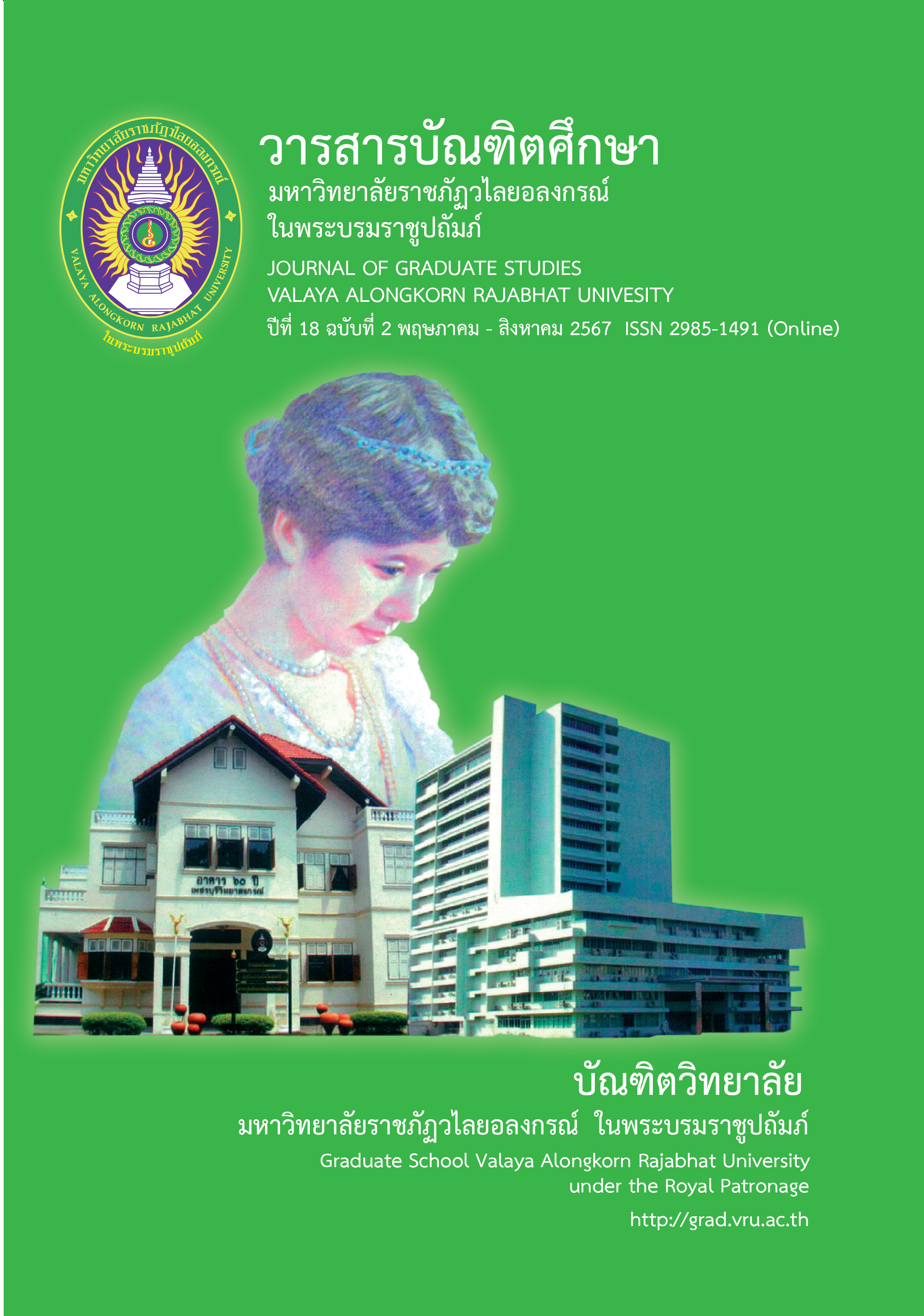CONCERNS-BASED ADOPTION MODEL: IMPLEMENTING INNOVATION SUCCESSFULLY
Main Article Content
Abstract
An interesting model for successfully implementing innovation, new practices, or curriculum is Concerns-based Adoption Model (CBAM), which focuses on changing teachers’ attitudes and usage behaviors through various school processes and the cooperation of various stakeholders. It consists of different main three dimensions of diagnosis: Stages of Concerns (SoC), Level of Use (LoU), and Innovation Configuration (IC), which can be applied by curriculum leaders or educational leaders to disseminate innovations in curriculum and new practices that aim to be successful, worthwhile, effective, and efficient as well as encouraging advancements in various fields or student development.
Article Details

This work is licensed under a Creative Commons Attribution-NonCommercial-NoDerivatives 4.0 International License.
บทความทุกเรื่องได้รับการตรวจความถูกต้องทางวิชาการโดยผู้ทรงคุณวุฒิ ทรรศนะและข้อคิดเห็นในบทความ Journal of Global of Perspectives in Humanities and Social Sciences (J-GPHSS) มิใช่เป็นทรรศนะและความคิดของผู้จัดทำจึงมิใช่ความรับผิดชอบของบัณฑิตวิทยาลัย มหาวิทยาลัยราชภัฏวไลยอลงกรณ์ ในพระบรมราชูปถัมภ์ กองบรรณาธิการไม่สงวนสิทธิ์การคัดลอก แต่ให้อ้างอิงแหล่งที่มา
References
Armstrong, D. (1989). Developing and documenting the curriculum. London: Allyn and Bacon.
George, A. A., Hall, G. E. & Stiegelbauer, S. M. (2006). Measuring implementation in schools: The stages of concern questionnaire. Austin, TX: SEDL. Retrieved from http://www.sedl.catalog/items/cbam17.html
Hall, G. E. (1979). Measuring stages of concerns about the innovation: A manual for use of the SoC questionnaire. Austin: University of Texas, Research and Development Center for Teacher Education.
Hall, G. E. & Hord, S. M. (1987). Changes in schools: Facilitating the process. Albany, NY: State University of New York Press.
Harvey, T. R. (1990). Checklist for change: A pragmatic approach to creating and controlling change. Needham Heights, MA: Allyn & Bacon.
Hord, S. M. & Austin, L. H. (1986). Effective curriculum implementation: Some promising new insights. The Elementary School Journal. 87(1), 96-115.
Institute for the Promotion of teaching Science and Technology. (2019). kān thalǣng khāo pramœ̄n PISA 2018 [Press release of PISA assessment results]. Retrieved from https://pisathailand.ipst.ac.th/news-12/
Jansrisukot, J. (2010). nawattakam : kānʻō̜kbǣp kānrīanrū samrap nakrīan thuk khon sū kān chūailư̄a dek LD [Intervention Innovation for LD children]. Udon Thani: Banlao Printing House.
Jansrisukot, J. (2012). rāingān kānwičhai chabap sombūn rư̄ang kānphatthanā rōngrīan tonbǣp RTI MODEL [Development of RTI Model Master School]. Udon Thani: Faculty of Education Udon Thani Rajabhat University.
Jansrisukot, J., Surat, W., Udom, R., Suwanaphong, S. & Saenglert, J. (2014). kānphatthanā rabop kān chūailư̄a samrap nakrīan chan ʻanubān sưksā dōI chai RTI MODEL [Development of intervention system for early childhood students]. Rommayasan Journal. 14(1), 287-291.
Loucks, S. F., Newlove, B. H. & Hall, G. E. (1975). Measuring levels of use of the innovation: A manual for irenicons interviewers and raters (Report No. 3013). Austin: The university of Texas at Austin, research and development center for teacher education.
Marso, R. N. & Pigge, F. L. (1989.) The influence of pre-service training and teaching experience upon attitude and concern about teaching. Teaching and Teacher Education. 5(1), 33-41.
Olafson, L, Quinn, L. F. & Hall, G E. (2005). Accumulating gains and diminishing risks during the implementation of best practices in a teacher education course. Teacher quarterly education. Summer, 93-106.


